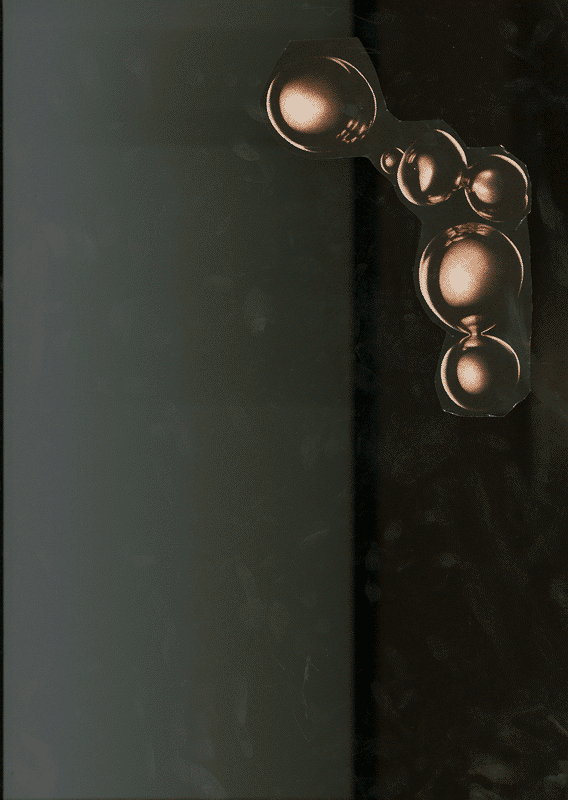There is a steep increase in traces of sticky fingers on contemporary art. Especially in the art that has been placed under the rather strange label of ‘post-Internet’. Those traces are what we leave behind on our portable devices: fingerprints on screens big and small that then turn up in artworks. But then there are the footprints too, the product of seemingly dirty shoes. Both give some old discussions around analogue photography a new digital twist and, in doing so, revive the postmodern discourse on representation. Whereas in the twentieth century Duchamp championed dust as an indexical sign in art, in the twenty-first century bodily grease is the ultimate mark of physical presence.
Take for example Nadia Belerique’s images, which are made in the scanner. Simultaneously high-tech and handmade, these portrait-format inkjet photographs are mounted to aluminium and Plexiglas. They are made to scale, and the abstract shapes that are part of them show varying degrees of transparency. The edges of the shapes seem cut and sometimes ripped. Occasional green and red forms are interspersed within a mostly grey scale where everything is strangely luminous. Sometimes a recognisable object – a brass bracket, for example – has entered the space of the scanner. There is a certain effect of depth giving the pictures body, turning them into semi-objects, although they are both flat and thin. Covering all of the photographs are fingerprints.
Reusing archival analogue photographs, sometimes from the holdings of a Toronto newspaper, and masking film used in that archive to manipulate press photos, Belerique makes old-style image editing and retouching the very material of her own work. In this way outdated cut-and-paste techniques return, much as 20 years ago we started to be flooded by work employing rapidly ageing technologies such as slide and film projectors. Today it happens in the midst of the proliferation of digital images on a variety of luminous screens, indicating a sort of migration of ‘the real’, of where something concrete can sit, and where the ephemeral is allowed to exist.
In the otherwise clunky group exhibition are you experienced? (2015), at the Art Gallery of Hamilton, near Toronto, Belerique’s straightforward and yet complex images are accompanied by rephotographed and morphed cardboard cutouts, for example of Star Trek: The Next Generation’s hypersensitive Deanna Troi. Purchased secondhand online, the starting points are transported from the world of marketing of popular culture to the gallery space, in the meantime embodied in steel, occasionally painted white. Halfway between ghosts and shadows, they appear like suitable companions to the photographs, standing next to a thick milk-coloured carpet covering the floor. At first glance this looks pristine, but then you discover black footprints from sturdy rubber soles, as if trespassers have just come by. Made with Liquid Light emulsion, the footprints only develop when exposed to light.
If the photographic indexical sign has in one sense almost disappeared with the demise of analogue photography and film, it has returned big-time in another format. It is the idea that the celluloid film has been in direct contact with light, leaving traces similar to a footprint in the sand and a weather vane in the wind. Whereas Duchamp with a poetic gesture allowed dust to come in through an open studio window, covering works like The Large Glass (1915–23) and thereby welcoming the surrounding world and daily life, artists of the last couple of decades have featured the dirt in archaic-looking slide and film works. And now Belerique, like many others today, is generous with greasy fingerprints.
The interest in representation, the mass media and semiotics that the Pictures Generation and other artists around the same time expressed has mutated into a concern about the production and status of images in a more direct way. It is now more about perception and illusion, the oscillation between materiality and immateriality, the abstract and the concrete. However, besides – surprisingly.– often ending up in white-cube commercial spaces, both the older and the newer projects share literal presence and concrete production forms, but now they are made by the use of digital cameras and scanners. Nevertheless, the human hand is still indexically present, through all those sticky fingers, whether belonging to the artist or not.
This article was first published in the October 2015 issue.
